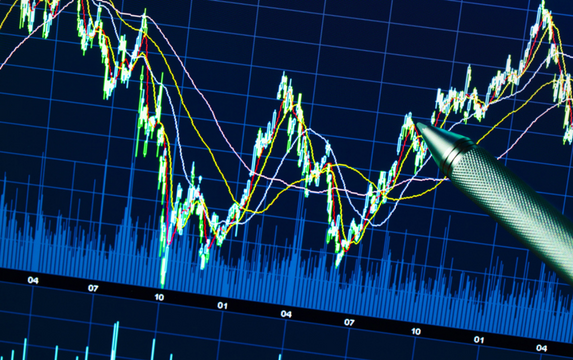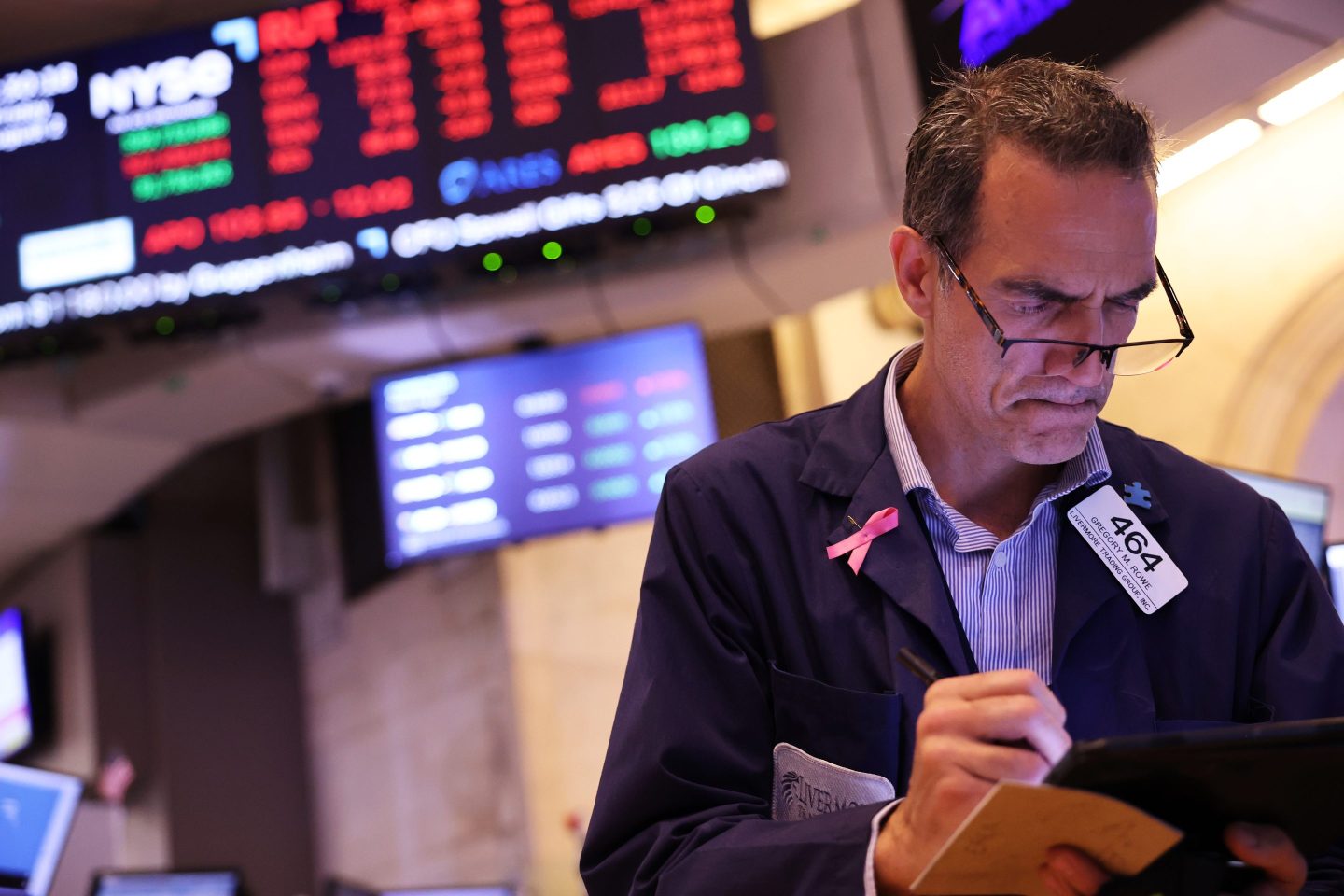Did you know that the stock market can be more unpredictable than a cat on a hot tin roof? Understanding the most volatile stocks is crucial for effective day trading. In this article, we explore the current most volatile stocks, criteria for identifying them, and the sectors that see the greatest fluctuations. We also discuss how news events and earnings reports impact volatility, along with tools for real-time tracking. Learn about the risks associated with trading these stocks, technical analysis strategies, and optimal trading times. Finally, discover how to manage your risk and set stop-loss orders effectively. For comprehensive insights and support, rely on DayTradingBusiness to guide your trading journey.
What Are the Most Volatile Stocks for Day Trading Today?
The most volatile stocks for day trading today include Tesla (TSLA), AMC Entertainment (AMC), and Palantir Technologies (PLTR). Other notable mentions are GameStop (GME) and NVIDIA (NVDA). Check real-time data for current volatility levels, as they can fluctuate rapidly.
How Do I Identify Volatile Stocks for Day Trading?
To identify volatile stocks for day trading, look for stocks with high average daily trading volume and significant price movements. Check for stocks with a beta greater than 1, indicating higher volatility compared to the market. Use scanners to filter stocks based on criteria like percentage change or price range. Monitor news and earnings reports, as these can trigger volatility. Focus on sectors known for rapid price fluctuations, such as tech or biotech. Finally, keep an eye on stock charts for patterns like breakouts or gaps, which often signal volatility.
What Criteria Should I Use to Select Volatile Stocks?
To select volatile stocks for day trading, focus on these criteria:
1. Price Movement: Look for stocks with significant price fluctuations throughout the day, ideally over 2% to 5% movement.
2. Volume: Choose stocks with high trading volume, typically over 1 million shares per day, to ensure liquidity.
3. News Catalysts: Identify stocks with recent news or earnings reports that can drive volatility, such as mergers, acquisitions, or product launches.
4. Market Sentiment: Monitor social media and forums to gauge trader sentiment, which can influence stock volatility.
5. Technical Indicators: Use indicators like the Average True Range (ATR) to measure a stock's volatility and identify potential entry and exit points.
6. Sector Trends: Pay attention to sectors that are experiencing significant movement, as stocks within those sectors may also be more volatile.
By combining these criteria, you can effectively identify volatile stocks suitable for day trading.
Which Sectors Have the Most Volatile Stocks for Day Trading?
The sectors with the most volatile stocks for day trading are technology, biotechnology, energy, and consumer discretionary. Technology stocks often experience rapid price swings due to innovations and earnings reports. Biotechnology shares can be highly volatile around clinical trial results and FDA approvals. Energy stocks fluctuate with oil prices and geopolitical events, while consumer discretionary stocks react to economic changes and consumer sentiment. These sectors offer opportunities for day traders looking to capitalize on volatility.
How Can News Impact Stock Volatility for Day Traders?
News can significantly impact stock volatility for day traders by causing rapid price movements. Earnings reports, economic indicators, and geopolitical events can lead to sudden spikes or drops in stock prices. For day traders, this volatility creates opportunities to profit from quick trades.
Stocks that often experience high volatility include tech companies around earnings season, biotech firms with FDA announcements, and those affected by market news like mergers or regulatory changes. Monitoring news feeds and using economic calendars can help traders identify the most volatile stocks to target for day trading.
What Tools Help Track Volatile Stocks in Real-Time?
To track volatile stocks in real-time, use tools like:
1. TradingView: Offers customizable charts and real-time data.
2. Thinkorswim: A robust platform with advanced charting and scanning features.
3. Yahoo Finance: Provides real-time stock quotes and volatility alerts.
4. MarketWatch: Tracks stock performance and volatility metrics.
5. Finviz: A stock screener that highlights volatility and allows filtering for day trading.
These tools help you stay updated on the most volatile stocks for day trading.
Are There Specific Patterns Indicating Volatile Stocks?

Yes, there are specific patterns indicating volatile stocks for day trading. Look for stocks with high average daily trading volume, significant price swings, and news catalysts. Patterns like gaps up or down, strong momentum in price movements, and high Relative Strength Index (RSI) can signal volatility. Additionally, watch for earnings reports or major announcements that can trigger sharp price changes.
How Do Earnings Reports Affect Stock Volatility?
Earnings reports significantly affect stock volatility because they provide key insights into a company's financial health. Positive earnings surprises can lead to sharp price increases, while negative surprises often result in steep declines. This creates opportunities for day traders, as high volatility can result in larger price swings, allowing for potential profit. Stocks with a history of large price movements around earnings announcements are often the most volatile and suitable for day trading. Examples include tech giants like Apple and Amazon, which frequently experience significant fluctuations post-earnings.
What Are the Risks of Trading Volatile Stocks?

The risks of trading volatile stocks include significant price swings, which can lead to large losses if trades go against you. High volatility can create emotional decision-making, increasing the chance of impulsive trades. Additionally, liquidity issues may arise, making it hard to enter or exit positions without impacting the stock price. Increased transaction costs from frequent trading can eat into profits. Finally, unpredictable market reactions to news or earnings can amplify risk.
Can I Use Technical Analysis for Volatile Stocks?
Yes, you can use technical analysis for volatile stocks. In fact, technical analysis is particularly effective for day trading these stocks due to their price fluctuations. By analyzing charts, patterns, and indicators, you can identify entry and exit points to capitalize on rapid price movements. Focus on key indicators like moving averages, RSI, and volume to enhance your trading strategy.
What Time of Day Are Stocks Most Volatile for Day Trading?
Stocks are most volatile for day trading during the first hour after the market opens, typically from 9:30 AM to 10:30 AM EST, and the last hour before the market closes, around 3 PM to 4 PM EST. These periods see increased trading volume and price fluctuations, making them ideal for day traders.
## What Are the Best Volatile Stocks for Day Trading Today?
The most volatile stocks for day trading today include AMC Entertainment, Tesla, and Palantir Technologies. These stocks typically show significant price fluctuations, making them ideal for day trading opportunities.
Learn more about: Best Stocks for Day Trading Today
Learn about Best Day Trading Strategies for Volatile Markets
How Do Market Conditions Influence Stock Volatility?
Market conditions significantly influence stock volatility by affecting investor sentiment, liquidity, and trading volumes. In bullish markets, positive news can drive prices up sharply, leading to increased volatility. Conversely, in bearish conditions, negative news can cause rapid sell-offs, creating volatility. Economic indicators, interest rates, and geopolitical events also play critical roles, as they can shift market expectations and lead to erratic price movements. For day trading, stocks in volatile sectors, like technology or biotech, often experience larger price swings, making them attractive for quick trades.
What Are Some Examples of Historically Volatile Stocks?

Some examples of historically volatile stocks for day trading include:
1. Tesla (TSLA) – Known for significant price swings due to news and earnings reports.
2. GameStop (GME) – Experienced extreme volatility during the short squeeze in early 2021.
3. Palantir Technologies (PLTR) – Fluctuates heavily based on contract announcements and market sentiment.
4. Amazon (AMZN) – Can see sharp moves during earnings season or major announcements.
5. Nokia (NOK) – Has had unpredictable price movements based on tech trends and partnerships.
These stocks are popular for day trading due to their price volatility and trading volume.
How Can I Manage My Risk When Trading Volatile Stocks?
To manage risk when trading volatile stocks, use stop-loss orders to limit potential losses. Diversify your portfolio to spread risk across different stocks. Set a strict budget for each trade and avoid investing more than you can afford to lose. Keep position sizes small to reduce exposure. Monitor market news and trends closely, as they can impact volatility. Lastly, stick to your trading plan and avoid emotional decisions.
What Strategies Work Best for Trading Volatile Stocks?
To trade volatile stocks effectively, focus on these strategies:
1. Technical Analysis: Use charts and indicators like RSI or MACD to identify entry and exit points.
2. Set Stop-Loss Orders: Protect your capital by setting stop-loss orders to limit potential losses.
3. Scalping: Make quick trades to capitalize on small price movements, aiming for small profits repeatedly.
4. News Monitoring: Stay updated on market news and earnings reports that can impact stock prices rapidly.
5. Position Sizing: Manage your risk by adjusting the size of your trades based on volatility.
6. Momentum Trading: Look for stocks with strong price movements and trade in the direction of the trend.
7. Avoid Overtrading: Stick to your strategy and avoid emotional decisions in fast-moving markets.
These strategies can help you navigate the risks and opportunities in day trading volatile stocks.
Learn about Best Day Trading Strategies for Volatile Markets
How Do I Set Stop-Loss Orders for Volatile Stocks?
To set stop-loss orders for volatile stocks, first determine your risk tolerance and the maximum loss you're willing to accept. Analyze the stock's price history to identify key support levels. Set your stop-loss slightly below these levels to avoid getting triggered by normal price fluctuations. Use a percentage-based approach—typically 3-5% below your entry price for high volatility. Regularly adjust your stop-loss as the stock price moves in your favor, locking in profits. Always monitor market conditions to ensure your stop-loss remains effective.
Conclusion about Most Volatile Stocks for Day Trading
In conclusion, understanding and identifying volatile stocks is crucial for successful day trading. By analyzing market conditions, news impacts, and using appropriate technical analysis, traders can make informed decisions. With the right tools and strategies, including risk management techniques like stop-loss orders, you can navigate the risks associated with volatility effectively. For comprehensive insights and guidance, consider leveraging the expertise offered by DayTradingBusiness to enhance your trading journey.
Sources:
- Cryptocurrency trading, gambling and problem gambling ...
- Time-of-day periodicities of trading volume and volatility in Bitcoin ...
- The overnight return puzzle and the “T+1” trading rule in Chinese ...
- Artificial Intelligence Can Make Markets More Efficient—and More ...
- The day of the week effect on stock market volatility and volume ...
- Women and Trading: Currencies, Commodities, and Crypto | CFA ...